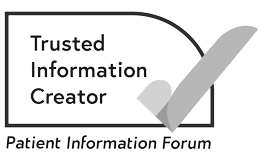Chemotherapy for lung cancer
Chemotherapy can be used for SCLC and NSCLC. It may be used as a main treatment or given with other cancer treatments.
What is chemotherapy?
Chemotherapy uses anti-cancer (cytotoxic) drugs to destroy cancer cells. Cytotoxic means toxic to cells. Chemotherapy is an important treatment for lung cancer.
Sometimes cancer drugs are called systemic anti-cancer drugs as they treat cancer throughout the body. They are sometimes called SACT drugs for short.
Other SACT drugs called targeted or immunotherapy drugs are sometimes given along with chemotherapy for lung cancer. They work differently to chemotherapy and have different side effects. Chemotherapy is also given with radiotherapy and surgery.
How chemotherapy is given
Lung cancer drugs are usually given into a vein (intravenous). You usually have chemotherapy as an outpatient.
The chemotherapy drugs can be given through:
- a cannula – a short, thin tube the nurse puts into a vein in your arm or hand
- a central line – a fine tube that goes under the skin of your chest and into a vein close by
- a PICC line – a fine tube that is put into a vein in your arm and goes up into a vein in your chest
- an implantable port (portacath) – a disc that is put under the skin on your chest or arm and goes into a vein in your chest.
When your cannula, line or port is in place, the chemotherapy drugs can be given into it by injection, as a drip or through a pump.
Some lung cancer drugs are taken as tablets or capsules that you swallow. This is called oral chemotherapy.
We have more information about how chemotherapy is given.
What chemotherapy drugs are used for lung cancer
You often have a combination of at least 2 drugs. Some people have treatment with one drug. For both non-small cell lung cancer (NSCLC) and small cell lung cancer (SCLC) you usually have either cisplatin or carboplatin with another drug. But there are different drugs and combinations you can have.
Some of the drugs used include:
- carboplatin
- cisplatin
- CAV (cyclophosphamide, doxorubicin and vincristine)
- docetaxel
- etoposide
- gemcitabine
- irinotecan
- paclitaxel
- pemetrexed
- topetecan
- vinorelbine.
Other chemotherapy drugs may also be used. Your doctor or nurse will give you more information.
Chemotherapy for non-small cell lung cancer (NSCLC)
Chemotherapy is often used to treat non-small cell lung cancer. You might be given a combination of chemotherapy drugs with other lung cancer drugs or treatments.
Chemotherapy, immunotherapy and surgery
You might have chemotherapy before or after surgery for lung cancer.
Neoadjuvant chemo-immunotherapy
Sometimes chemotherapy and an immunotherapy drug called nivolumab are given before surgery. This is usually if the tumour in the lung is bigger, or the cancer has spread to nearby lymph nodes. The aim is to shrink the cancer and make surgery more effective. This is called neoadjuvant chemo-immunotherapy. Immunotherapy drugs are also given as a drip into a vein. They work differently to chemotherapy and have their own side effects.
Adjuvant chemotherapy
After surgery to remove lung cancer your doctor might advise you to have chemotherapy. The aim is to reduce the risk of the lung cancer coming back. This is called adjuvant chemotherapy.
Chemoradiation
If you have locally advanced NSCLC lung cancer and surgery is not suitable you might have chemotherapy at the same time as radiotherapy. This is called concurrent chemoradiation.
You usually start your chemotherapy during the first week of radiotherapy. Or you might have 1 cycle of chemotherapy while your radiotherapy is being planned.
Chemotherapy and immunotherapy
If the cancer is advanced, some people might have the chemotherapy drugs carboplatin and paclitaxel with the immunotherapy drug pembrolizumab.
The chemotherapy drugs pemetrexed with either cisplatin or carboplatin can also be given with pembrolizumab. You might have this if you have non-squamous NSCLC and targeted drugs are not likely to work for you.
Chemotherapy can also be given with other immunotherapy drugs, including atezolizumab and bevacizumab.
We have more information about lung cancer and immunotherapy drugs.
Chemotherapy on its own
Sometimes chemotherapy is given on its own. This might be when targeted or immunotherapy drugs are not likely to work for you.
You usually have a combination of either carboplatin or cisplatin, along with another drug. For example, gemcitabine, paclitaxel or vinorelbine.
If you have non-squamous type NSCLC you might be given the chemotherapy drug pemetrexed with carboplatin or cisplatin.
Other combinations of chemotherapy may also be given.
If you are not well enough, you might have 1 chemotherapy drug on its own.
Maintenance chemotherapy for NSCLC
If you had chemotherapy with pemetrexed and cisplatin or carboplatin and it helped shrink or control the cancer, you might continue with chemotherapy. This is sometimes called maintenance treatment.
Instead of stopping chemotherapy after a few cycles, you have pemetrexed every 3 weeks. You have it for as long as it is controlling the cancer, and the side effects are not causing you problems.
The aim is to control the cancer and help you live for longer.
If you need more treatment for NSCLC
If NSCLC comes back, or is starting to grow again, you can usually have more chemotherapy. You and your doctor and nurse can talk about your options. It can also depend on how well you are at the time.
It can be very difficult to learn that the cancer has come back. Your cancer team will give you support. It might be helpful to talk about your feelings with family or friends.
Your treatment will depend on the chemotherapy drugs you had when you were first treated. If these drugs kept the cancer away for a long period, your doctor may advise having them again. For example, you could have cisplatin or carboplatin with another drug.
Or your doctor may recommend docetaxel on its own, or with a targeted therapy called nintedanib. Or you might have chemotherapy with an immunotherapy drug.
Chemotherapy for small cell lung cancer (SCLC)
Chemotherapy is usually your first treatment for small cell lung cancer (SCLC). SCLC can grow quickly and has often spread outside the lung when it is diagnosed. Chemotherapy is often more helpful for faster growing cancers. It can treat cancer cells that have already spread. Your treatment depends on the stage of SCLC you have.
You usually have either of the following chemotherapy drugs:
You have 1 of these drugs with a second chemotherapy drug, such as etoposide.
Limited stage SCLC
In limited stage SCLC the cancer cells can be seen in 1 lung and in nearby lymph nodes.
Chemoradiation
If the cancer is limited stage and you are well enough to cope with side effects, chemoradiation is the most effective treatment.
How you have this may depend on the cancer centre where you are having treatment. For example, you may have radiotherapy 2 times a day over 3 weeks, along with chemotherapy. The radiotherapy starts during the first or second cycle of chemotherapy.
Adjuvant chemotherapy
Surgery is not often possible for SCLC. If you have surgery to remove lung cancer you will usually have chemotherapy after it. This is called adjuvant chemotherapy. The aim is to try to get rid of any remaining cancer cells and reduce the risk of the cancer coming back.
Extensive stage SCLC
Extensive stage SCLC is when the cancer has spread:
- outside the lung
- to the chest area
- to other parts of the body.
You might also have chemotherapy drugs along with an immunotherapy drug, such as atezolizumab or durvalumab. Immunotherapy drugs are also given as a drip into a vein. They work differently to chemotherapy and have their own side effects.
If chemotherapy helps to shrink the cancer you may have radiotherapy to the chest afterwards. Your treatment also depends on how well you are and how side effects might affect you.
Your doctor may also talk to you about having radiotherapy to the brain to help prevent or to reduce the risk of lung cancer cells spreading there. This is called prophylactic cranial radiotherapy (PCR).
If you need more treatment for SCLC
If SCLC comes back or is starting to grow again you can usually have more chemotherapy. You and your doctor and nurse can talk about your options. It can also depend on how well you are at the time.
It can be very difficult to learn that the cancer has come back. Your cancer team will give you support. You might find it helpful to talk about your feelings with family or friends.
Depending on how long it was since your last chemotherapy, you might have the same drugs again. If the cancer comes back after a shorter time, you usually have different chemotherapy drugs.
Your doctor might advise having a combination of chemotherapy drugs, called CAV. CAV is named after the initials of the chemotherapy drugs used. These are:
- cyclophosphamide
- doxorubicin (also called Adriamycin®)
- vincristine.
The combination is also sometimes called VAC.
If you are not well enough to have a combination of drugs you might have a single drug on its own. Some people have a drug called topotecan instead of CAV. You take topotecan as a tablet.
Possible side effects of chemotherapy for lung cancer
Your cancer doctor, nurse or pharmacist will give you information about the possible side effects of the chemotherapy drugs you are having. They will talk to you about how they can be controlled and what you can do to manage them. Always tell your doctor, nurse or pharmacist about any side effects you have.
We have more information about the side effects of chemotherapy.
About our information
This information has been written, revised and edited by Macmillan Cancer Support’s Cancer Information Development team. It has been reviewed by expert medical and health professionals and people living with cancer.
-
References
Below is a sample of the sources used in our lung cancer information. If you would like more information about the sources we use, please contact us at informationproductionteam@macmillan.org.uk
National Institute for Health and Care Excellence (NICE). Lung cancer – Diagnosis and management. Clinical guideline 2019. Last updated 2023. (accessed Nov 2023) Available at: https://www.nice.org.uk/guidance/ng122
European Society for Medical Oncology (ESMO). Small-cell lung cancer: ESMO clinical practice guidelines for diagnosis, treatment and follow-up. 2021. (accessed Nov 2023). Available at: https://www.esmo.org/guidelines/guidelines-by-topic/esmo-clinical-practice-guidelines-lung-and-chest-tumours/small-cell-lung-cancer
European Society for Medical Oncology (ESMO). Early and locally advanced non-small-cell lung cancer (NSCLC): ESMO clinical practice guidelines for diagnosis, treatment and follow-up. 2017. eUpdate 01 September 2021: New Locally Advanced NSCLC Treatment Recommendations (accessed Nov 2023) Available at: https://www.esmo.org/guidelines/esmo-clinical-practice-guideline-early-stage-and-locally-advanced-non-small-cell-lung-cancer
European Society for Medical Oncology (ESMO). ESMO expert consensus statements on the management of EGFR mutant non-small-cell lung cancer. 2022 (accessed Nov 2023). Available at: https://pubmed.ncbi.nlm.nih.gov/35176458/
Date reviewed

Our cancer information meets the PIF TICK quality mark.
This means it is easy to use, up-to-date and based on the latest evidence. Learn more about how we produce our information.
The language we use
We want everyone affected by cancer to feel our information is written for them.
We want our information to be as clear as possible. To do this, we try to:
- use plain English
- explain medical words
- use short sentences
- use illustrations to explain text
- structure the information clearly
- make sure important points are clear.
We use gender-inclusive language and talk to our readers as ‘you’ so that everyone feels included. Where clinically necessary we use the terms ‘men’ and ‘women’ or ‘male’ and ‘female’. For example, we do so when talking about parts of the body or mentioning statistics or research about who is affected.
You can read more about how we produce our information here.





